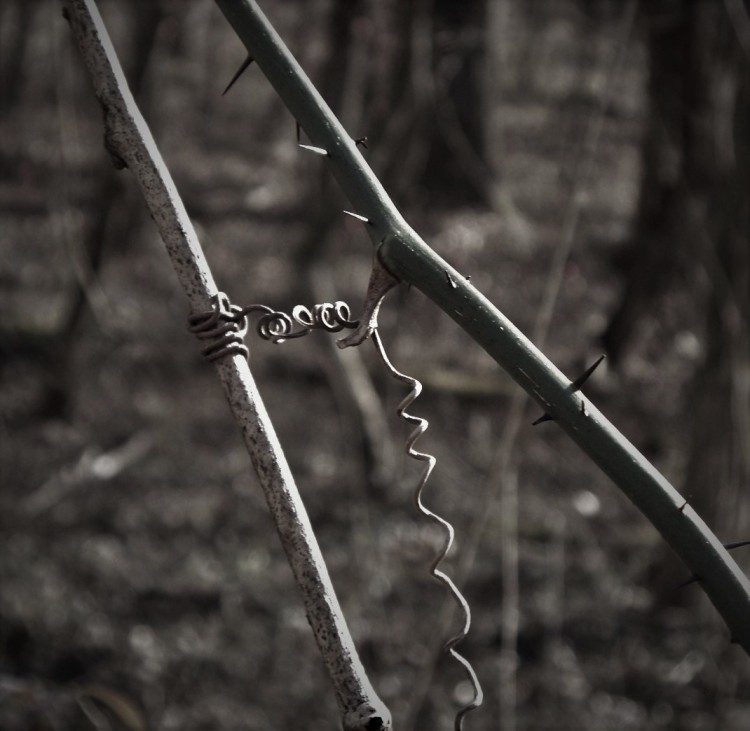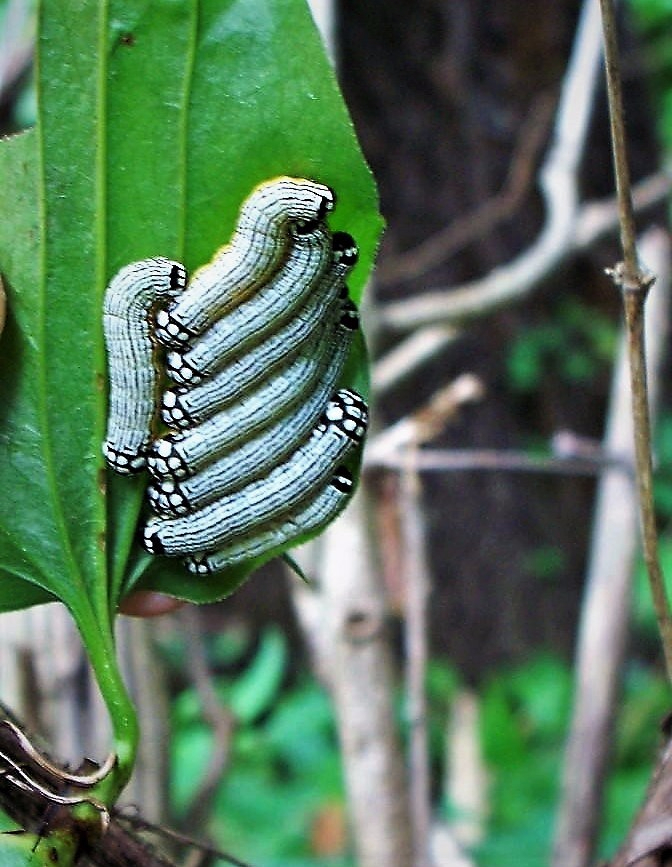Sometimes the one that gives shelter needs sheltering

Smilax, we almost let you down. In our zeal to cut down all those big bush honeysuckles, we didn’t notice you were protected by some of them. Your vines happily streaming up to the sky from the center of an impossible tangle, ringed round by impenetrable bush honeysuckle and privet.
With the thickets of invasives gone, you were open to attack from big-eyed herbivores. Young tender shoots disappeared one by one, and the glorious spiny tangles began to shrink.

That’s unfortunate, since smilax patches give shelter to small creatures, young trees, and ground nesting birds. And shelter is scarce where we have removed invasive plants, since almost nothing else was growing there. It’s an awkward time, still a long way from the dense understory of native shrubs like spicebush that can be found in more intact forests.
But shelter can be created too..
Note the green ropes of a Smilax hispida clonal patch, with brush and limbs strategically placed to prevent entry by deer. This technique is part of the “revival” – to actively encourage the return and survival of native plants in our forest.

You’d think these thorns would be enough to discourage anything.

If you have been reading this blog you know I am fascinated by vines. All kinds of vines, even the invasive ones like porcelainberry and wintercreeper. They’ve hit on a great way to get off the ground in a hurry – dispense with the upright woody architecture. It takes time for plants to grow woody stems, and while they’re short there’s a good chance of being shaded out or eaten. But vines grab onto the stems surrounding them, and climb away. Tendrils are one of the more popular adaptations for climbing – the twining fingers of vines.

If I haven’t yet convinced you of the amazingness of smilax, I have one last thing to offer..
The Turbulent Phosphila

Yes, that is truly the common name of Phosphila turbulenta, a species of moth that feeds only on smilax. The caterpillars cluster together for safety in numbers, and what looks like their head is their rear (a common caterpillar ploy).
Though in their other life they are dull brown moths, the glory of a cluster of phosphila caterpillars is something we should all get to experience. Watch for them this summer – the smilax revival is underway.

roger
Can’t wait to see my smilax come back this year and this world I never knew existed. It has been persistent for the 28 years I’ve lived here thriving with the honeysuckle that grows on the fence. I’ll be sure to treat it with due respect.
LikeLike
oneforestfragment
Maybe you will even see some turtbulent phosphilas munching on it!
Rosemary
LikeLike
judy
Learn something new every post. Thanks so much for all the information sent out to all of us. We catch your amazement. It is contagious.
Judy
LikeLike
Susan
You are my hero. I know you know this. Please continue to teach me and I will help you hen you let me know you need help.
Susan Sheckler
Sent from my iPad
>
LikeLike
oneforestfragment
Thanks everyone – plants have always grabbed my attention in a big way. So great to share what they are teaching me!
LikeLike